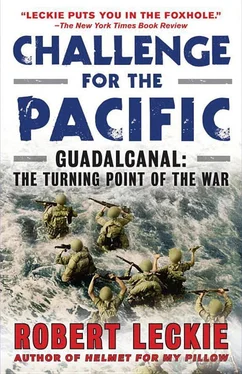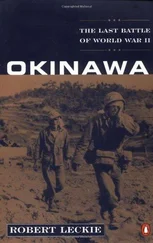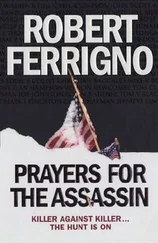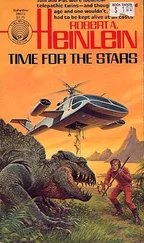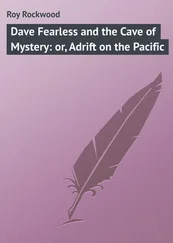The Navy’s cooler heads found the proposal ridiculous.
The men of the Army General Staff thought it was impossible.
The Army, they explained, could never scrape together the ten divisions or more required for such an operation. The Navy officers nodded reflectively, saying nothing of their underlying suspicion that the Army, optimistic about Germany’s chances against Russia that spring, was secretly hoarding its forces for use on the continent. The Army, as they knew, regarded the Soviet Union as the number one potential enemy. 3Therefore, the Army, looking northwestward, could not be expected to be enthusiastic about committing troops in the southeast.
So the Naval General Staff decided that instead of invading Australia it would be more feasible to isolate Australia. The flow of American war matériel to the island continent could be blocked by seizing eastern New Guinea and driving through the Solomons into the New Caledonia–Fijis area. What did the Army think of this?
The Army approved. It promised to furnish its South Seas Detachment for the operation. These decisions also were reached in March. On the eighth day of that month, Lae and Salamaua in New Guinea were invaded. Two days later Finschhafen was occupied.
Unknowingly, Imperial General Headquarters had pointed its baton at the island called Guadalcanal.
Among the forces gathering for the operation to isolate Australia was the Japanese Navy’s 25th Air Flotilla. Its mission was to hammer at Port Moresby, the big Allied base on New Guinea which lay only a few hundred miles north of the Australian continent.
But in early March the 25th Air Flotilla was understrength. One of its three components, and perhaps the best in quality, the Tainan Fighter Wing, was still far away on the fabled island of Bali in the East Indies. Orders were dispatched to Bali alerting the Tainan Wing for movement.
Saburo Sakai was the crack pilot of the crack Tainan Fighter Wing. Saburo was not only a born fighter, he was born into a fighting caste. He was a samurai , the scion of professional soldiers, and he could trace his ancestry to those samurai who had invaded Korea in the sixteenth century. Saburo regarded himself as a samurai even though that caste had been abolished by the great Emperor Meiji at the end of the last century. Saburo was proud that his ancestors were among those haughty warriors of the city of Saga who had refused to give up their twin swords and had risen in revolt. And if, because of Imperial rescript, the proud and cruel samurai could no longer be cruel, no longer swing their heavy two-handed sabers to sever, at a single slash, the body of some poor defenseless Eta or pariah who had offended them, 4they could always remain proud. Saburo Sakai’s people had remained proud, scratching out a bare subsistence on a tiny farm near Saga, still scorning money, still wearing the emblem of the two sabers symbolic of their caste, and still priding themselves on their stoic indifference to pain and the strength of their sword hands.
Then, in the 1930s, the military adventurers seized power in Japan. The samurai was again in favor; his knightly code of bushido— a mixture of chivalry and cruelty—was adopted as the standard for all the young men of Japan. In 1933, at the age of sixteen, Saburo enlisted in the Navy. He endured the purposeful torture called “recruit training” in the Japanese Navy, went to sea on the battleships Kirishima and Haruna , applied for the Navy Flier’s School, and was accepted.
Saburo, a youth of normal Japanese height, which is about a half foot shorter than that of the normal American, possessed an iron body. Though his nature was warm and good-humored, his will was of the same unbending metal. He became the outstanding student pilot of the year. He could hang by one arm from the top of a pole for half an hour, swim fifty meters in well under thirty seconds, stay underwater for two and a half minutes, and because a fighter pilot’s movements need to be quick, he had so conditioned his reflexes that he could catch a fly in a single lightning lunge.
At the end of 1937 Saburo was graduated as the outstanding student of the Thirty-eighth Non-Commissioned Officers Class. Of seventy-five handpicked candidates for that class, only twenty-five had survived. One day Japan would rue this policy of training only an elite of an elite, of providing itself with no reserve of skilled pilots to offset combat losses, but in the Sino-Japanese War of the mid-1930s the Japanese pilots fought with such clear superiority as to indicate that they would have a long combat life indeed.
Saburo Sakai fought in that war. He became famous for his ardor and daring. Wounded once during a surprise enemy air raid, he ran for his plane streaming blood, taking off to pursue the Chinese bombers and to cripple one of them before he was forced to return to base. By December 7, 1941, Saburo Sakai was already an ace. He flew from Formosa in the first strikes against Clark Field in the Philippines. He was the first Japanese pilot to shoot down an American fighter over those islands. He was the first to flame a Flying Fortress, the very bomber piloted by Captain Colin Kelly, America’s first war hero. By March of 1942, Saburo Sakai had shot down thirteen aircraft: Chinese, Russian, British, Dutch, and American. By that time also he and his comrades had reassembled at Bali. They were there to rest, but inactivity only made them restless. They became irritable. They fought with the soldiers who guarded their base. They drank or visited those brothels without which no Japanese military force can long endure. Saburo Sakai did neither, for he was a fighter pilot and a samurai who stuck to his code. Nevertheless, he also fretted, wondering if he would ever get home to see his family.
On March 12 came the great news. Rotation! The men with the longest time overseas were being relieved to go home, and Saburo had more time out than any of them.
But the new leader of the Wing, Lieutenant Commander Tadashi Nakajima, did not call Saburo’s name. Crushed, Saburo asked him if there had been a mistake.
“No, you do not go home with the other men,” Nakajima said. “I need you, Sakai, to go with me. We are advancing to a new air base. It’s Rabaul—on the island of New Britain—the foremost post against the enemy. You’re the best pilot in the squadron, Sakai, and I want you to fly with me.” 5
There was no appeal, not for an enlisted man in the Japanese Navy. Heartbroken, Saburo Sakai became one of eighty pilots who were herded aboard a tiny, stinking, decrepit freighter for the 2500-mile voyage to Rabaul. Only a 1000-ton subchaser escorted them. Indifferent to human suffering, and therefore blind to human value, Japan had placed a good portion of her finest naval fliers aboard a rusty old derelict and exposed them to the very real peril of a single torpedo or 500-pound bomb.
But the rattler made Rabaul. It entered spacious, horseshoe-shaped Simpson Harbor and discharged its passengers. The pilots were appalled. Vunakanau Airfield was little more than a narrow, dusty airstrip set in the shadow of a live volcano. From time to time a deep rumbling shook the field and smoke and stones spouted from the crater’s mouth. Nevertheless the men took heart when a seaplane tender delivered twenty of the latest models of the Zero fighter. They went back into action, and Saburo Sakai was again the scourge of the enemy. He flew on fighter sweeps to Port Moresby or escorted twin-engine “Betty” bombers on raiding forays over the big Allied base, and he shot down enemy planes with astonishing ease. The American P-39s and P-40s—Bell Airacobras and Curtiss Warhawks—were no match for the Japanese Zeros. The Zero was faster and much more maneuverable; and no one could cut inside an enemy fighter’s turn so sharply as Saburo Sakai, bringing the American or Australian pilot under the full aimed fire of twin 20-mm. cannon and a pair of light machine guns.
Читать дальше
